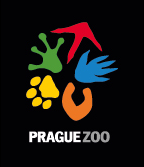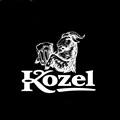European Bison Released by Prague Zoo in Dolní Počernice Help Revitalise Landscape
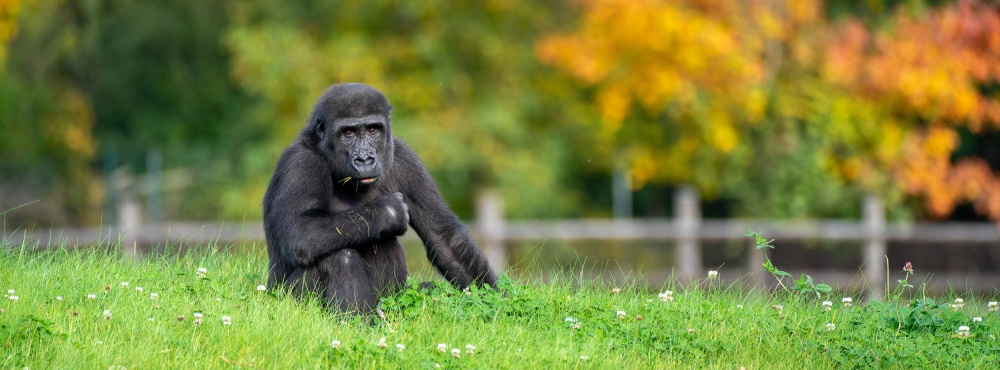
Thanks to Prague Zoo’s “Bison in Prague” project, Europe's largest land mammals will once again roam free in Dolní Počernice. The herd of three female European bison will soon be joined by a bull, who is on his way from Finland. Together, they will both enlarge the species’ numbers, it almost became extinct! They will also revitalise the local forest-steppe ecosystem, thus restoring the landscape to its natural character. Prague Zoo is working on the project with the Prague City Hall, the Dolní Počernice district, and the Czech Academy of Sciences.
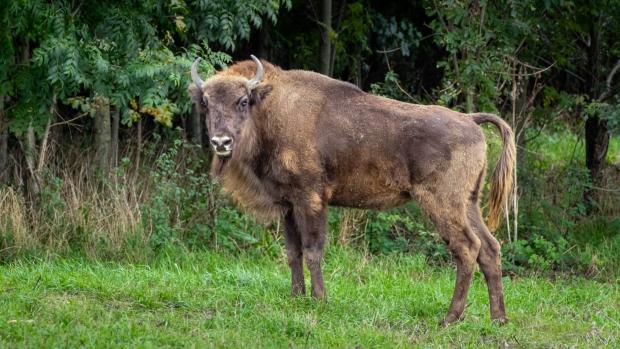 Omega (pictured), a two-year-old breeding female, settled into her enclosure back in September. Photo: Oliver Le Que, Prague Zoo
Omega (pictured), a two-year-old breeding female, settled into her enclosure back in September. Photo: Oliver Le Que, Prague Zoo
Oskar, Grebelle, Onelina and Omega – these bison’s new task is to revitalise the forest-steppe in Dolní Počernice. Barbora Dobiášová, curator of ungulates at Prague Zoo, explained, “Comparably to the introduction of Przewalski's horses to Dívčí hrady a few years ago, Prague Zoo will now expand its breeding grounds for bison thanks to a more than ten-hectare enclosure in Dolní Počernice. Returning large ungulates to the landscape helps many other animals. Their natural grazing and browsing helps restore a working biotope.”
A three-year-old breeding male, Oskar, originally from Helsinki Zoo, will lead the herd. The three-year-old female, Grebelle, also came from abroad, specifically from the Belgian Reserve d’Animaux Sauvage in Han-sur-Lesse. The two two-year-old females, who were settled in the enclosure in September to help the herd adapt better, were the only ones to be born in the Czech Republic: Onelina, is originally from Pilsen Zoo, and Omega, from Olomouc Zoo.
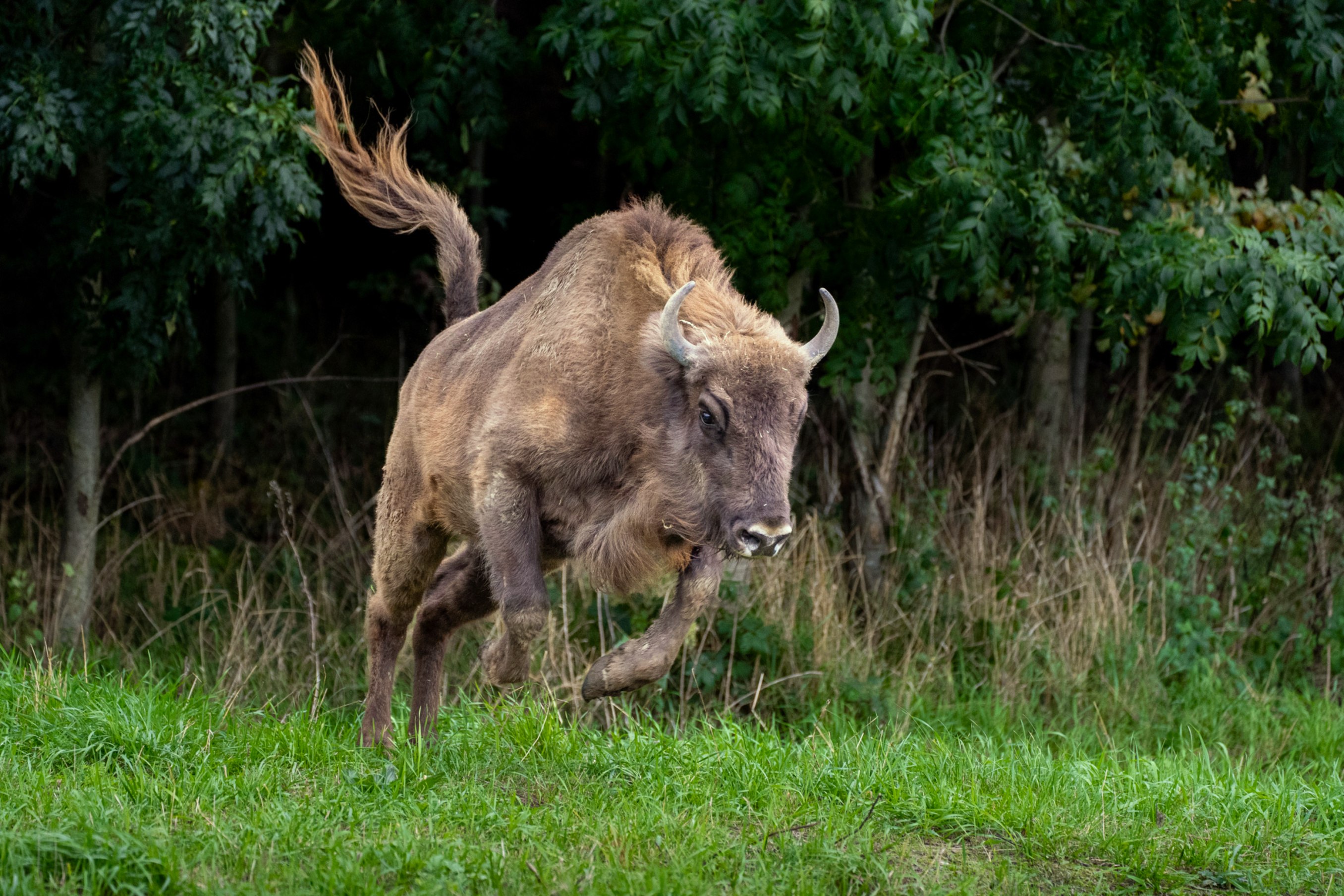
The bison are thoroughly enjoying their new enclosure. Photo: Oliver Le Que, Prague Zoo
Jana Komrsková, Prague’s Deputy Mayor for the Environment and Climate Change, said, “The bison breeding project in Dolní Počernice is a full-fledged initiative for the benefit of all parties. Prague Zoo’s breeding facilities will be expanded, the local landscape will start to recover, and finally, thanks to two lookout towers, the new enclosure will become an attractive destination for days off - and not just for Prague residents - like the Przewalski's horse enclosure at Dívčí hrady.”
The revitalised area will also serve as an eco-education centre for primary and secondary schools, where students will be able to observe the relationship between large ungulates and the landscape. Thanks to the bison, it should eventually have a more mosaic-like character, with a larger proportion of open landscape. Some of the more valuable tree plantings have been fenced off so that stands of mature trees can add to the mosaic in the future.
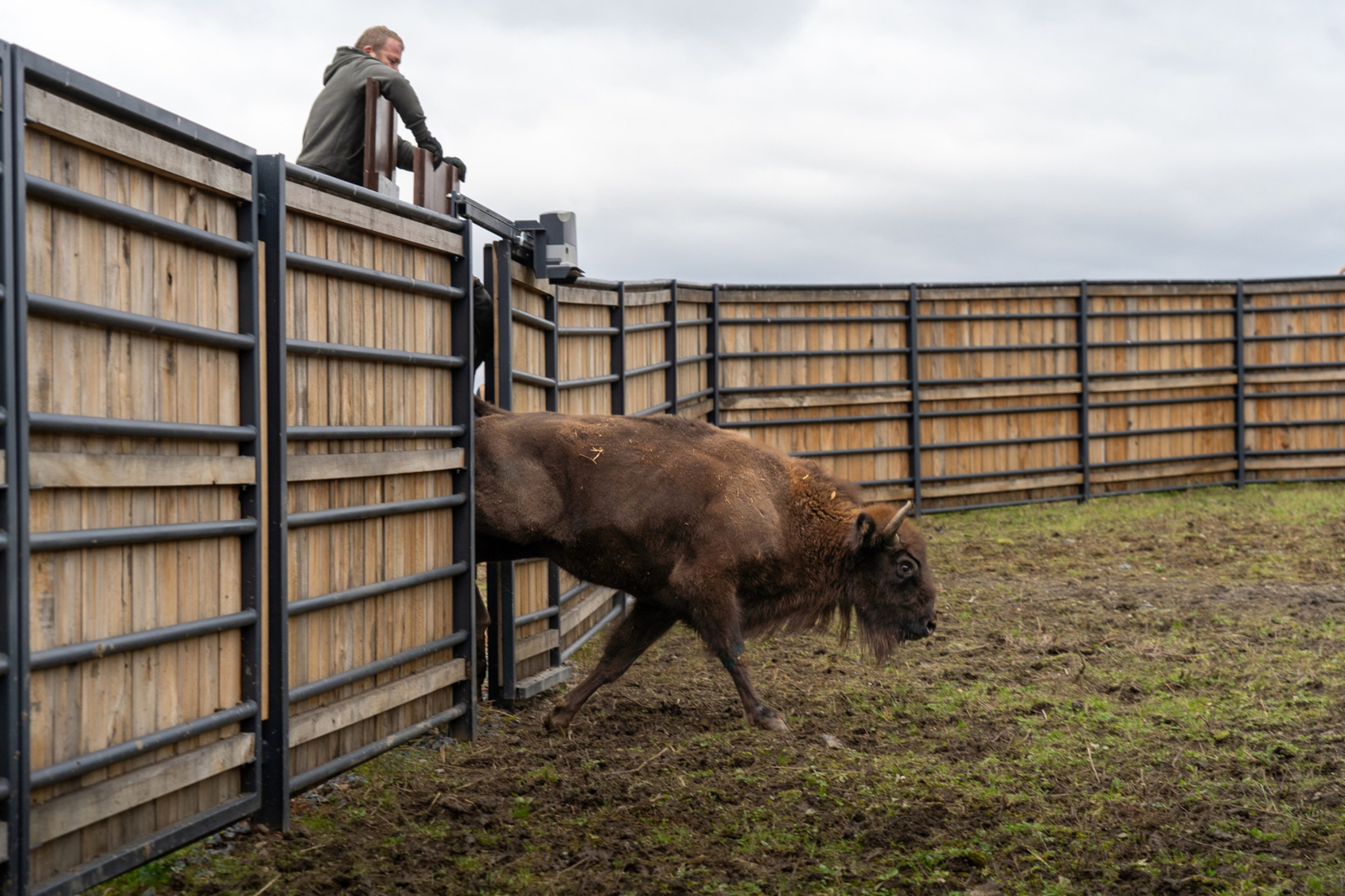
Participants were witness to the release of Grebelle, who came from Belgium’s Reserve d’Animaux Sauvage in Han-sur-Lesse. Photo: Oliver Le Que, Prague Zoo
This landscape diversity will provide nesting sites for birds. Due to intensive grazing, the proportion of nectar flowers, which are crucial for attracting butterflies, should also increase. Thanks to the droppings, experts also expect coprophagous insects, and the seasonal pool will attract water bound invertebrates and vertebrates. Cooperation with the Czech Academy of Sciences means the biotope’s development can be regularly monitored.
The European bison, once a common species throughout the continent, disappeared from the Czech countryside in the 18th century. However, deforestation and hunting meant it gradually began to decline in all parts of Europe, with small populations remaining in just the Białowieża Forest in Poland and the Caucasus. Even there, however, it was exterminated in the first three decades of the 20th century. If it were not for the efforts of zoos, private breeders and various conservation and reintroduction projects, it would have become extinct.
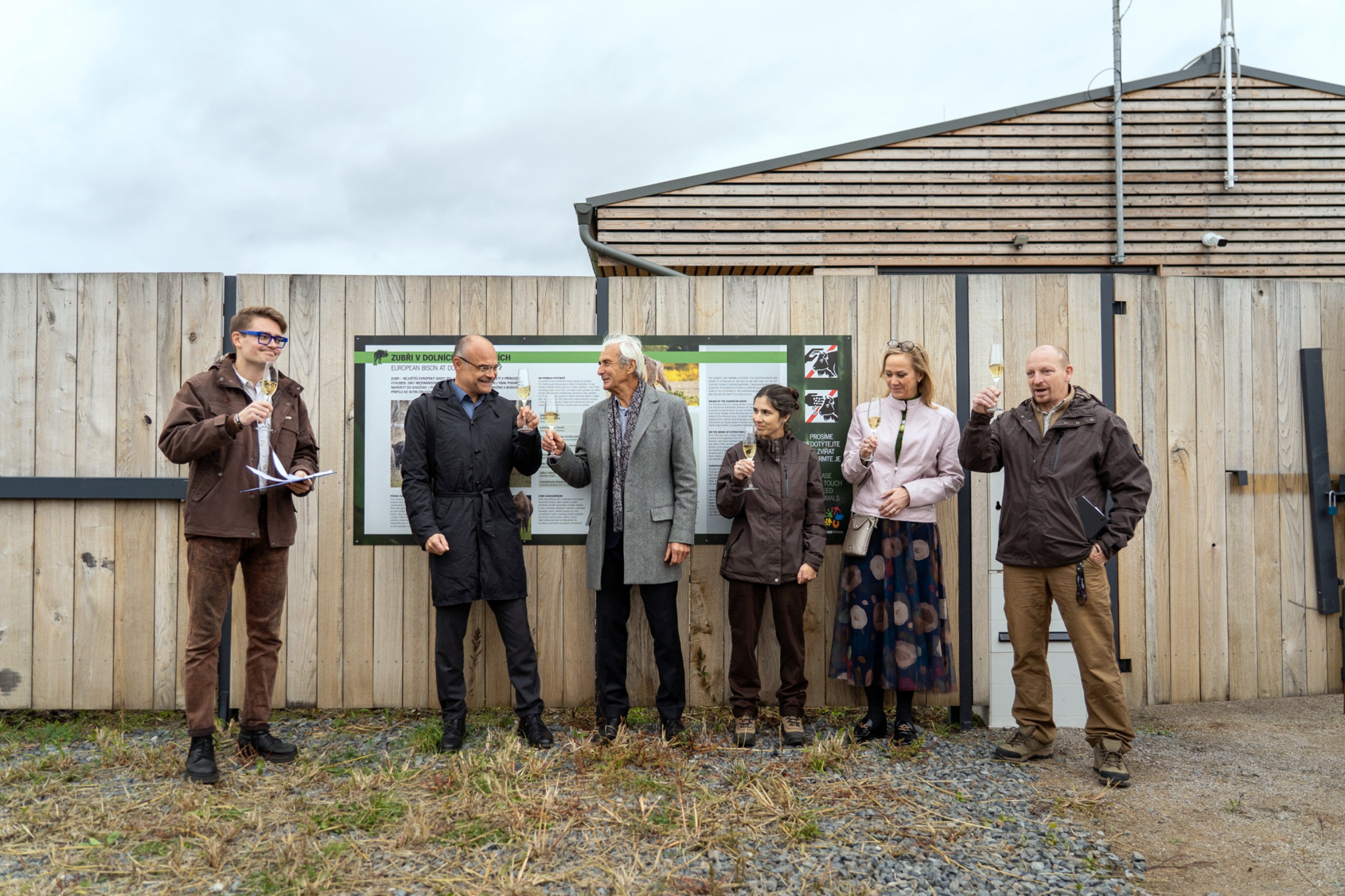
A toast to mark the opening of the new enclosure. From left: Prague Zoo press spokesman, Filip Mašek, Director of Prague City’s Environmental Protection Department, Štěpán Kyjovský, Mayor of Dolní Počernice, Zbyněk Richter, Prague Zoo’s curator of ungulates, Barbora Dobiášová, Prague’s Deputy Mayor for the Environment, Jana Komrsková, and Prague Zoo’s zoological deputy, Miroslav Machek. Photo Oliver Le Que, Prague Zoo
When efforts to save the bison first started, there were just fifty-four individuals in captivity, but only twelve were used for breeding. Today, there are thousands of them living in the wild and in zoos around the world. This success is primarily due to the efforts of Polish breeders. They keep the international studbook, which was published in 1932 and was the first studbook ever kept for a wild animal species.
Between the wars, Prague Zoo kept hybrids of European bison and American bison that were originally from private breeders. The zoo has been breeding purebred bison since 1948. The first calf was born here in 1957, and 104 have been reared to date. Prague Zoo also supports the reintroduction of bison, i.e. returning them to their original locations. Specimens from Prague Zoo have been sent to strengthen both the Caucasian and Polish populations.
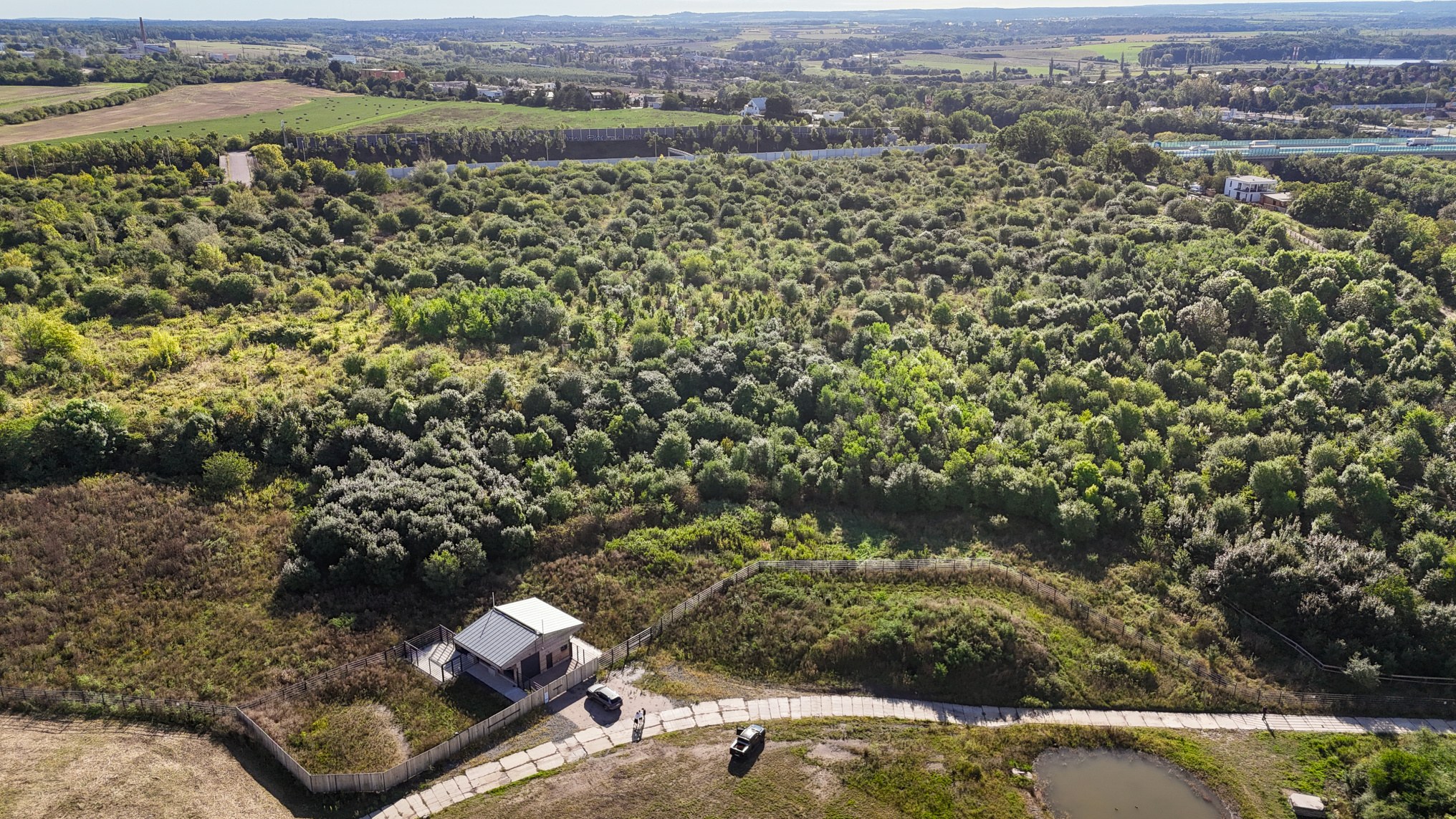
This photo taken from a drone shows the more than ten-hectare enclosure with its newly built breeding facilities. Photo Oliver Le Que, Prague Zoo
ZOOPRAHA.CZ
Contacts
- The Prague zoological garden
U Trojskeho zamku 120/3
171 00 Praha 7
Phone.: (+420) 296 112 230 (public relations department)
e-mail: zoopraha@zoopraha.cz
Others
